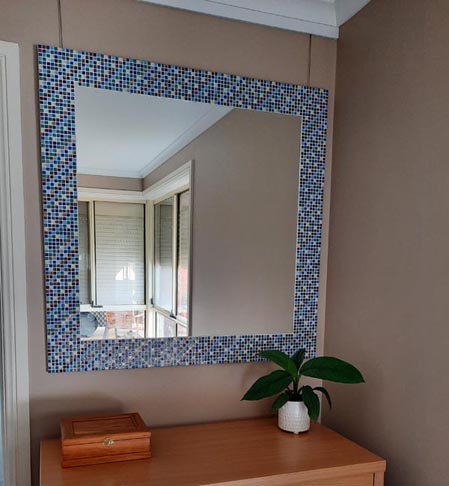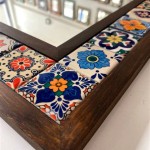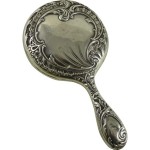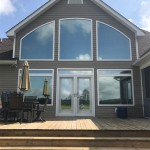How To Hang Heavy Mirrors On Walls
Hanging a heavy mirror can dramatically enhance a space, adding light and depth. However, safely and securely mounting a heavy mirror requires careful planning and execution. Failure to do so can result in damage to the mirror, the wall, and potentially cause serious injury. This article provides a comprehensive guide to hanging heavy mirrors, outlining the necessary tools, essential preparation steps, and various hanging methods.
The primary concern when hanging a heavy mirror is ensuring the wall can support its weight. Standard drywall, while suitable for lighter objects, is often insufficient for mirrors exceeding a certain weight. Therefore, understanding wall composition and appropriate hanging hardware is crucial.
Identifying Wall Type and Weight Capacity
Before proceeding, accurately identify the type of wall you are working with. The most common types are drywall, plaster, and concrete. Drywall is typically found in interior walls and consists of gypsum board covered in paper. Plaster walls are older and harder, often layered over lath (thin strips of wood). Concrete walls are common in basements and modern construction and offer the strongest support.
Determining the weight capacity of each wall type is essential. Drywall, when used with appropriate anchors, can typically support up to 20 pounds. Plaster, depending on its condition and the underlying lath, may support slightly more, but it is advisable to exercise caution. Concrete walls, when properly drilled and anchored, can support significant weight, often exceeding 100 pounds.
The weight of the mirror also dictates the necessary hardware and hanging method. If the mirror's weight is unknown, it is best to weigh it using a bathroom scale. Err on the side of caution and overestimate the weight to ensure adequate support.
Gathering Necessary Tools and Materials
Having the right tools and materials will streamline the process and improve the safety and success of the mirror installation. The following is a list of essential items:
*Stud Finder:
A stud finder is crucial for locating wall studs, the vertical framing members that provide the strongest support. Electronic stud finders are readily available and offer accurate detection. Magnetic stud finders can also be used, but they can be less reliable. *Level:
A level ensures the mirror is hung straight and prevents a tilted appearance. A spirit level or a laser level can be used. *Measuring Tape:
A measuring tape is necessary for accurately determining the mirror's placement and marking the location of hanging hardware. *Pencil:
A pencil is used to mark the wall for drilling or hardware placement. *Drill:
A drill is required for creating pilot holes for screws or inserting anchors into the wall. The drill bit size will depend on the type of anchor being used. *Screwdriver:
A screwdriver is needed to tighten screws into the wall anchors or directly into wall studs. Ensure the screwdriver matches the screw head type (Phillips, flathead, etc.). *Wall Anchors:
Wall anchors are used to secure screws in drywall or plaster when a stud is not available. Various types of anchors exist, including drywall anchors, toggle bolts, and molly bolts. The choice of anchor depends on the weight of the mirror and the wall type. *Heavy-Duty Picture Hanging Wire or D-Rings:
For mirrors with wire or D-ring hanging hardware, ensure the wire or D-rings are rated to support the mirror's weight. Replace them with heavier-duty options if necessary. *Safety Glasses:
Safety glasses protect your eyes from dust and debris generated during drilling. *Gloves:
Gloves provide a better grip and protect your hands during the installation process.Preparing the Wall and Mirror
Proper preparation is critical for a successful mirror installation. This involves cleaning the wall, accurately measuring and marking the desired location, and preparing the mirror for hanging.
Begin by cleaning the wall surface where the mirror will be hung. Remove any dust, dirt, or debris that could interfere with the adhesive of mounting hardware or obscure markings. Use a damp cloth to wipe the area and allow it to dry completely.
Determine the precise location where you want to hang the mirror. Use a measuring tape to find the center point and mark it lightly with a pencil. Consider the desired height and ensure the mirror is positioned at a comfortable viewing level. If hanging multiple mirrors, maintain consistent spacing between them.
Examine the back of the mirror to determine the type of hanging hardware it uses. Many mirrors come with pre-installed D-rings or wire. If the existing hardware appears flimsy or inadequate, replace it with sturdier options. D-rings should be securely attached to the mirror frame, and picture-hanging wire should be thick and strong enough to support the weight.
Different Hanging Methods Based on Wall Type and Mirror Weight
The specific hanging method will depend on the wall type, the location of wall studs, and the weight of the mirror. Here are several common methods:
*Hanging on a Wall Stud:
This is the strongest and most secure method. Use a stud finder to locate a wall stud in the desired location. Mark the stud's center point with a pencil. Drill a pilot hole through the drywall and into the stud. Use a screw that is long enough to penetrate at least 1 inch into the stud. Attach the mirror using appropriate hardware, such as D-rings or a heavy-duty picture hook. This method is ideal for heavy mirrors as it provides direct support from the wall's structural framing. *Using Drywall Anchors:
When a wall stud is not available, drywall anchors can provide sufficient support for mirrors weighing up to 20 pounds. Choose anchors appropriate for the mirror's weight. Mark the desired location for the anchor. Drill a hole in the drywall using a drill bit matching the anchor's size. Insert the anchor into the hole and gently tap it flush with the wall. Attach the mirror using a screw that is compatible with the anchor. Avoid over-tightening the screw, which can damage the drywall. Multiple anchors can be used to distribute the weight more evenly. *Using Toggle Bolts:
Toggle bolts offer a stronger alternative to drywall anchors, capable of supporting heavier mirrors. Drill a hole in the drywall that is large enough to accommodate the toggle wings. Thread the screw through the mirror's hanging hardware and then through the toggle wings. Fold the toggle wings inward and insert them through the hole in the wall. Once the wings are fully inserted, they will spring open behind the drywall. Gently pull the mirror towards you to ensure the wings are engaged. Tighten the screw until the mirror is securely mounted. Be careful not to over-tighten, as this could damage the drywall. *Using a French Cleat:
A French cleat consists of two interlocking pieces of wood. One piece is attached to the wall, and the other is attached to the back of the mirror. The angled design allows the mirror to easily and securely slide onto the wall-mounted cleat. This method is excellent for heavier mirrors, as it distributes the weight evenly across the cleat. Ensure both pieces of the cleat are securely attached using screws and appropriate anchors. Locate the wall cleat on a stud if possible. Precise installation is critical to ensure secure hanging. *Mirror Mounting Adhesive:
For lighter mirrors, and in conjunction with clips, mirror mounting adhesive can be used. Ensure the adhesive is specifically designed for mirrors and compatible with the wall surface. Clean the back of the mirror and the wall surface. Apply the adhesive to the back of the mirror, following the manufacturer's instructions. Press the mirror firmly against the wall and hold it in place until the adhesive sets. While adhesive can provide additional security, it should ideally be used with mechanical fasteners for heavy mirrors. *Using Mirror Clips:
Mirror clips are small metal or plastic fasteners designed to hold the mirror in place. They can be used in conjunction with adhesive or screws. The clips are attached to the wall along the edges of the mirror, providing support and preventing it from sliding. Select clips that are appropriate for the thickness of the mirror and securely fasten them to the wall, preferably into studs. Mirror clips are best suited for mirrors that are rectangular or square.Prior to drilling any holes, double-check all measurements and ensure the mirror is positioned correctly. Use a level to verify that the mirror will hang straight. Consider having a second person assist you with lifting and positioning the mirror, especially if it is heavy or awkward to handle. Working in pairs reduces the risk of accidents and ensures greater accuracy.
Once the mirror is securely mounted, inspect the installation to confirm it is stable and level. Gently push on the mirror to test its stability. If the mirror wobbles or feels insecure, readjust the hardware or add additional support. Periodically check the mirror's mounting hardware to ensure it remains secure over time. Tighten any loose screws or replace worn hardware as needed. Consider placing protective pads on the back of the mirror to prevent it from scratching or damaging the wall.

How To Hang A Large Or Heavy Mirror

A Better Way To Hang Heavy Mirror Hanging Pictures On The Wall

How To Hang A Heavy Mirror The Home Depot
How To Hang A 100 Pound Mirror On Drywall Quora

How To Hang A Very Heavy Picture Or Mirror The Best

How To Hang A Heavy Mirror C R F T

How To Hang A Heavy Mirror Or Picture She Holds Dearly

Hanging Heavy Mirror On Plaster Walls 6 Steps With Pictures Instructables

How To Hang A Heavy Mirror With Pictures Wikihow

How To Hang A Heavy Mirror At Home








